-
Car Reviews
- All reviews
- Midsize SUVs
- Small cars
- Utes
- Small SUVs
- Large SUVs
- Large cars
- Sports SUVs
- Sports cars
- Vans
Latest reviews
- Car News
-
Car Comparisons
Latest comparisons
- Chasing Deals
Is the most expensive model variant in Suzuki’s Australian line-up the hidden gem of its importer’s range? And why isn’t the S-Cross more popular?
Could Suzuki’s S-Cross possibly be the most high-achieving small SUV offered to Australia buyers in the past decade? Possibly (if perhaps not probably). The last S-Cross Chasing Cars reviewed was, ahem, ten years ago. Whoops.
My, much has changed at Chasing Cars since the formative days when the fresh-faced founder, Tom Baker, took a critical swing at the gen-two S-Cross GX and GXL back in 2014.
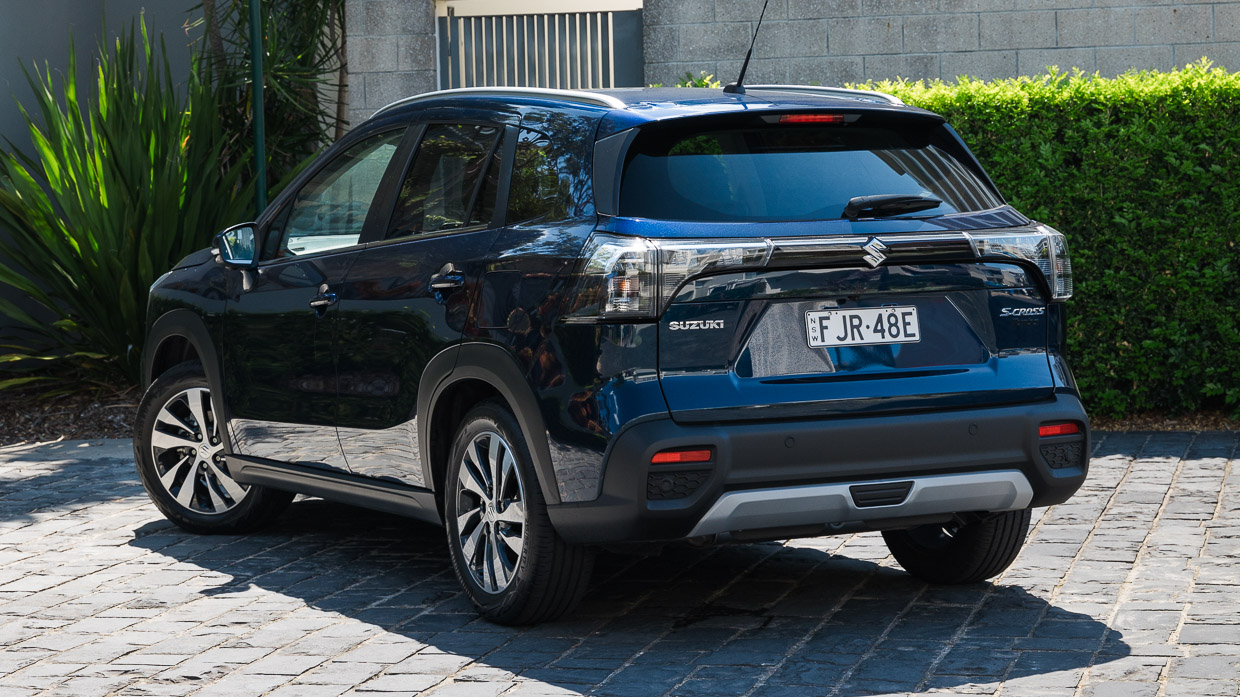
But what has become of the hatchback-turned-crossover nameplate now in its third generation that, unusually and somewhat uncomfortably, sits alongside Suzuki’s <other> small SUV, the Vitara?
For a start, the third generation of Suzuki’s flagship model lobbed globally in 2021 with a whole new look and landed Down Under a year later as an MY23 proposition.
While this latest ‘JYB’ model appears all-new, the gen-three ‘SX4 S-Cross’, as it’s called in overseas markets, remains underpinned by its forebear’s ageing Global C platform. It also carries over the 1.4-litre ‘Boosterjet’ engine heartbeat, making the current guise essentially an elaborate facelift rather than some reinvention.
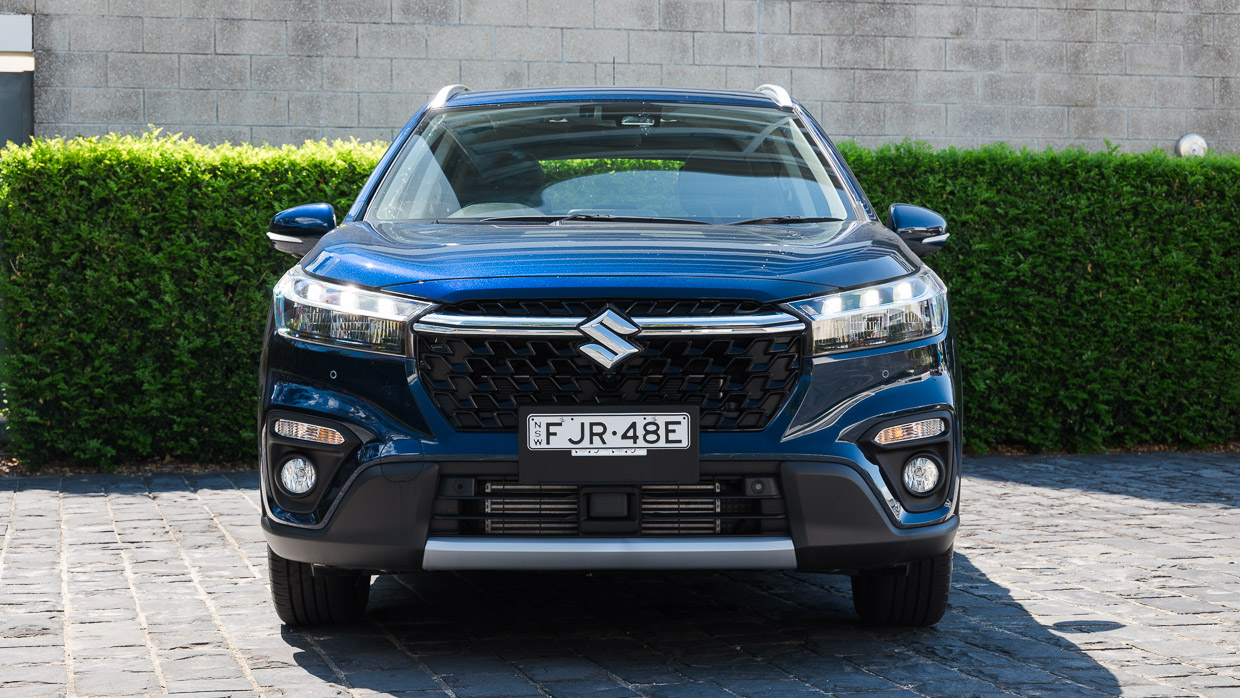
The S-Cross was and remains built in Hungary, so lobs with some promise of European panache into what’s largely an Asian-sourced, budget-friendly end of the small SUV landscape.
At the time of review, in the twilight of 2024, eight variants are offered Down Under, though half of them are the four available trim levels on price-trimmed MY23 plate runout. Of the base, AllGrip, Plus and ultimate AllGrip Prestige grades, the cheapest way into an S-Cross land is the MY23-plated no-line front-driver at $36,990 driveaway.
Our test subject, though, is the all-you-can-eat MY24 AllGrip Prestige that, in its optional metallic paintwork, is technically the priciest Suzuki money can currently buy in Australia in the brand’s five-model portfolio.
The AllGrip Prestige clocks in at $44,490 driveaway, or $45,235 D/A with our tester’s fetching Sphere Blue metallic paintwork.
That pricepoint is dangerous territory in Australia’s third-biggest volume segment, behind midsize SUVs and utes.
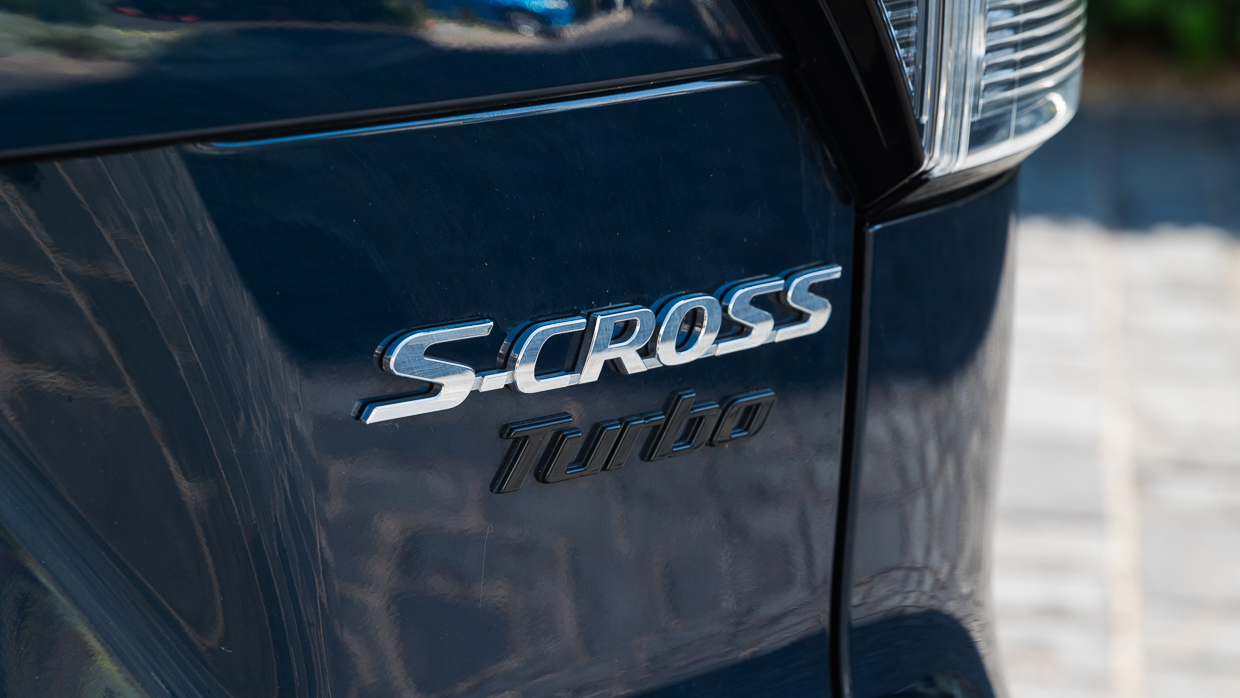
The sales-leading MG ZS tops out at just under $40K for the Essence, and similar outlay gets you into midrange Hyundai Kona. The range-topping Haval Jolion Ultra Hybrid is a tenner under $38K driveaway.
All can be had as hybrids, if front-drive only, handing the S-Cross some advantage given the AllGrip all-wheel drive. But the Suzuki is turbo petrol only – the so-called mild-hybrid 48-volt option offered overseas isn’t available in Australia.
Closer to home, the ultimate Vitara spec, the Turbo AllGrip, tops out at $41,490. Suzuki’s other small SUV is, to date in 2024 (according to VFacts), outselling the S-Cross four to one.
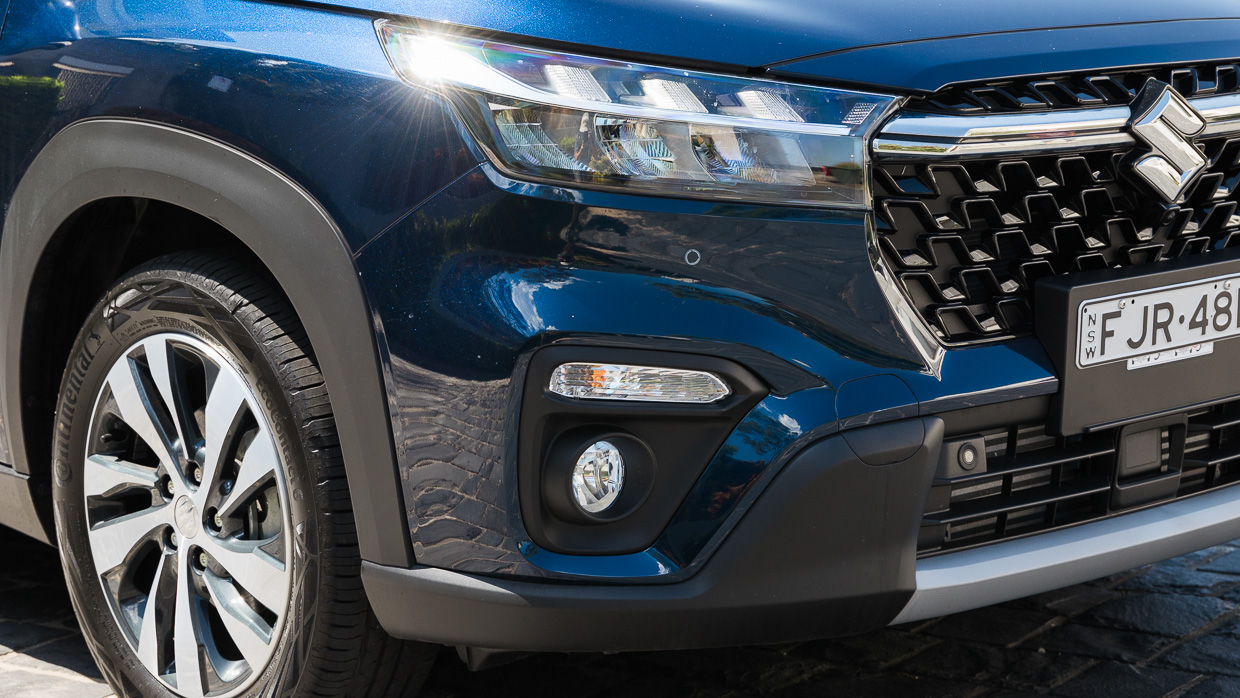
Standard features for the AllGrip Prestige include:
Lose the glass roof and AWD, and the S-Cross Plus offers virtually all of the Prestige fitout if with a $3000 saving ($41,490 driveaway). Alternatively, the regular AllGrip, at $39,990 driveaway, brings the same AWD running gear as the flagship, if with a more modest specification.
On paper, mechanical credentials appear solid if unremarkable. The 1.4-litre turbo four offers 104kW way up at 5500rpm with a decent 220Nm from 1500rpm, the auto is a proper torque converter unit rather than a CVT – albeit just with six speeds – and the rear axle all-paw traction is on demand.
So just how eager and sprightly the S-Cross becomes when you pin it in sport drive mode is quite a surprise. Throttle response is crisp and acceleration is downright surly in a manner that, by the powertrain numbers, it really shouldn’t be.
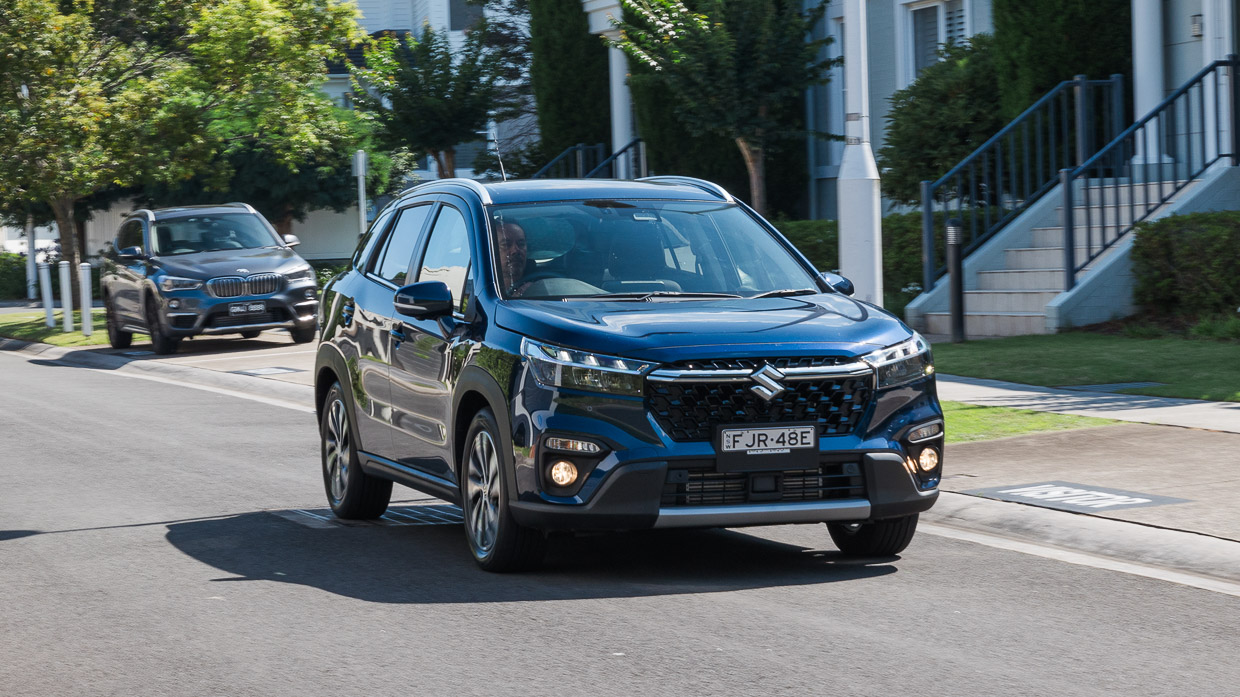
The hidden party trick is kerb weight, or more accurately not much of it. At 1290kg kerb, it’s properly waify compared to any small car, let alone one lugging around all-wheel drive gubbins. The downside is that sport mode keeps the engine wired above 2000rpm, leaving the Boosterjet mill raucous and too pokey for tamer urban runabout duties.
Left in default auto mode, it’s less impressive. The thrust drops off after sharp initial throttle response, and it gets caught snoozing slightly in slurry upchanges as the transmission aims for low engine rpm. Result? Uneven acceleration at times with lots of right foot yoyoing to smooth out forward progress.
There’s traction aplenty, though the 1.4T doesn’t dole out so much output to want to threaten traction most of the time in most conditions. Frankly, front drive ought to be plenty for this lightweight crossover.
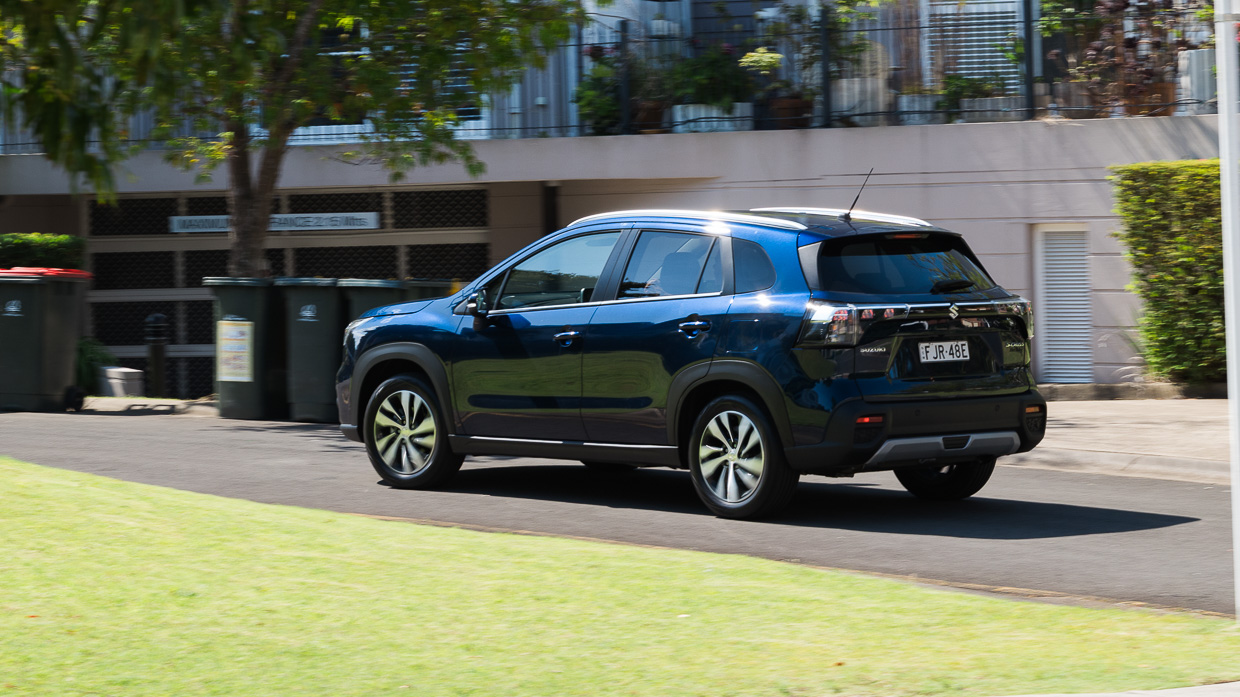
Suzuki wisely quotes “all-round” and “all grip” rather than “all terrain” because a 4WD machine the S-Cross ain’t. A dedicated third drive mode called ‘snow’ might pay handy dividends near the ski slopes in winter, while you can manually lock both axles 50:50 for mud or sand, which could be handy for many region owners.
But ground clearance, articulation, approach and departure angles? Suzuki doesn’t quote. Underbody cladding, rock sliders and anything like all-terrain capability from its modest 215mm 17-inch tyres? Nope.
If you find this to be disappointing, Suzuki offers the charming and more affordable Jimny in both three-door and five-door XL which are both fiercely capable vehicles off-road.
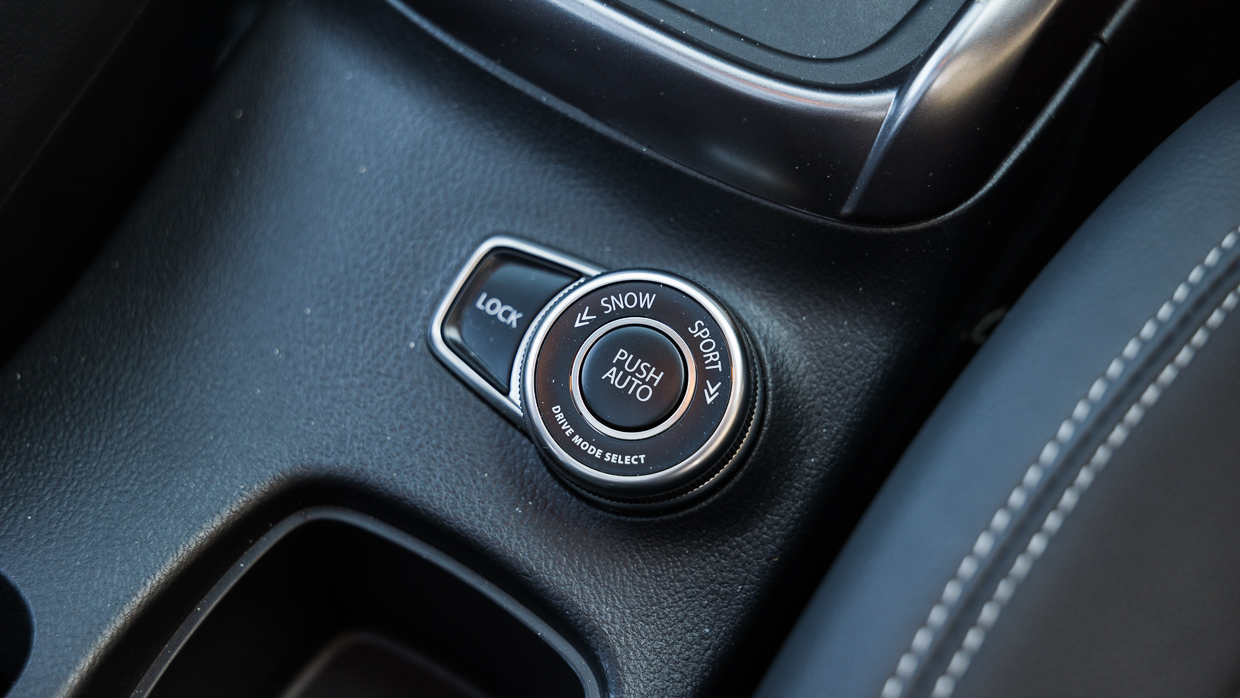
So more the Tarmac-venturer then? Indeed. Though not necessarily a remarkable specimen.
The ride quality is certainly on the abrupt side and even the chubby 55-series tyres are reluctant to take the edge of the impacts across square edge sleep bumps and potholes. And yet the firmness at play does little to translate much into directional response or body control.
The S-Cross tends to wobble about on its suspension around town, causing noticeable head toss with the occupants. It’s quite faintly and not to a major fault – not nearly as bad as Jimny, say – if still ever present and constantly noticeable.
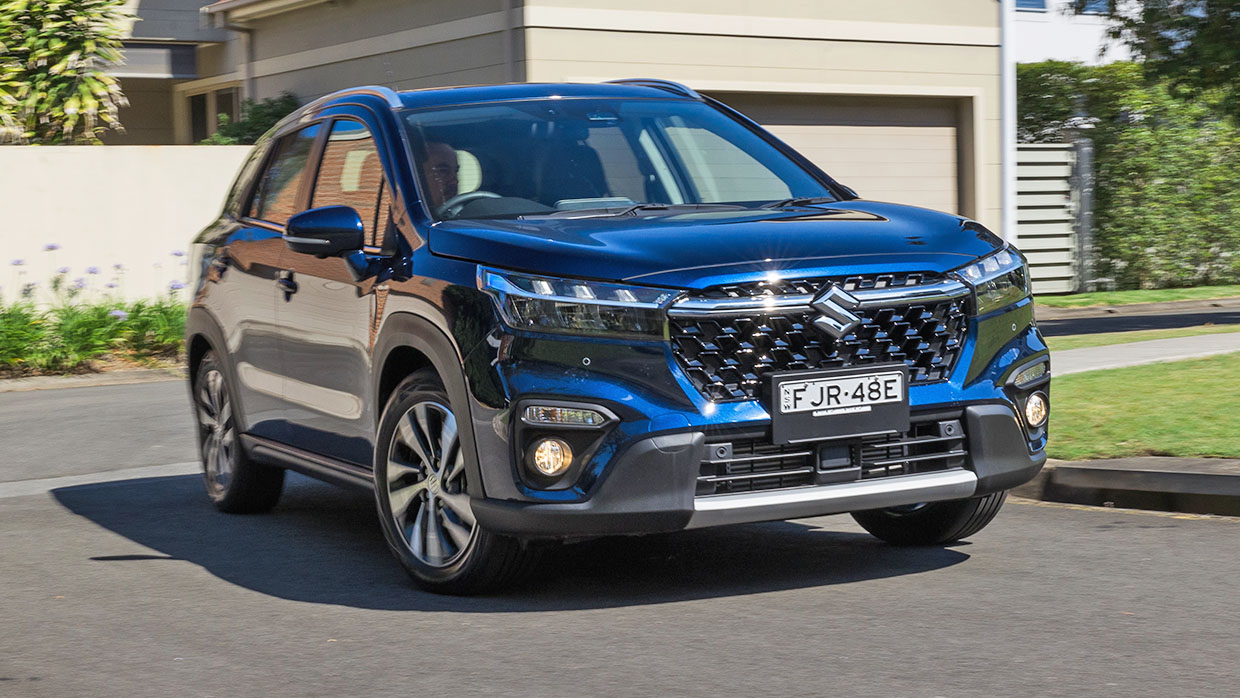
The underpinnings are strut front and torsion beam rear. Not the last word in sophistication, but it’s a format that can perform admirably in ride/handling balance if tuned properly and for market conditions.
However, this small Suzuki simply lacks polish and discipline in the last 10 percent of the driving experience, and that extends to the steering, which is aloof off centre and far from fluid. While it doesn’t need to be sporty, per se, there isn’t the depth of on-road engagement and connection enjoyed by some of its rivals.
Fuel consumption isn’t exactly rave-worthy, either. An indicated 6.9L/100km average for mixed driving planted almost entirely in auto drive mode – its most economical on paper – is simply too thirsty for 1.4 litres pushing just 1.3 tonnes of vehicle. And much thirstier than many of its direct hybrid rivals.
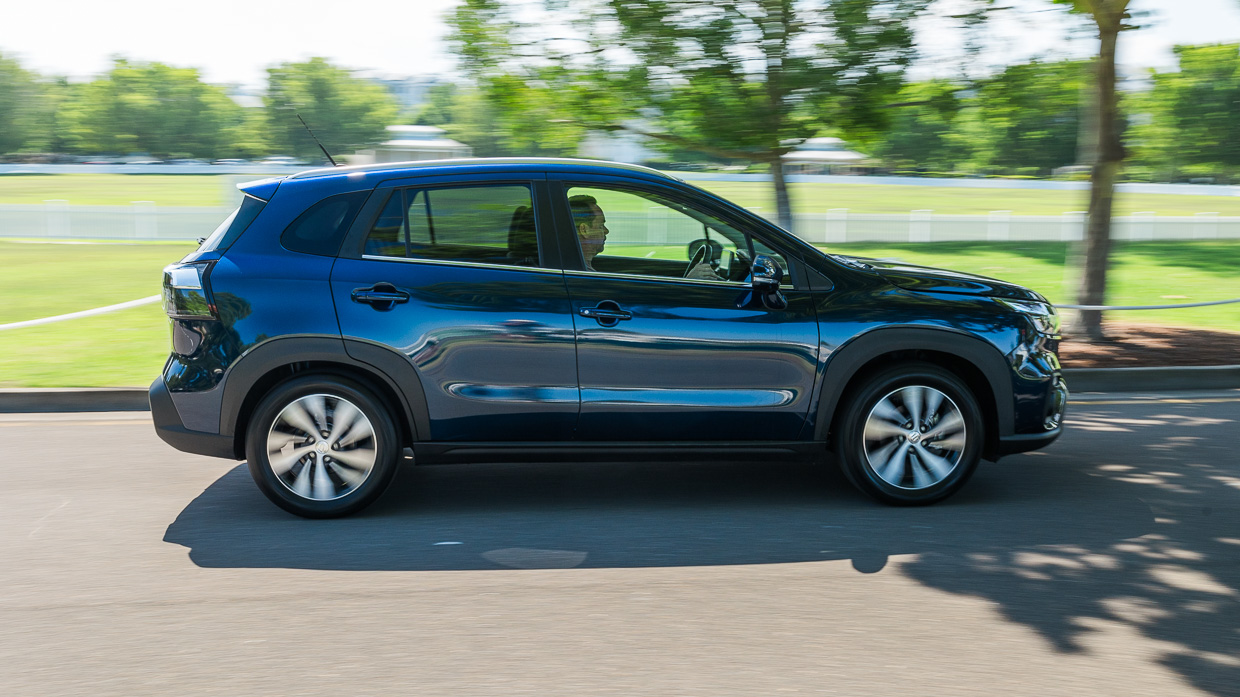
No, the 48-volt mild-hybrid offered overseas isn’t on the Aussie S-Cross menu.
But even if it was, Suzuki’s integrated starter generator MHEV tech is no match for a proper series-parallel application offered by competitors, as there’s a solid argument that such systems aren’t technically hybrids at all given drive is wholly internal combustion.
Outside and in, the design of S-Cross is perhaps most charitably described as classic. Styling is, of course, hugely subjective and not everyone is drawn to cutting-edge slickness.
But the fact remains that this gen-three design, released in 2022 mind, could’ve lobbed into Suzuki dealerships in 2011 and nobody would’ve batted an eyelid.
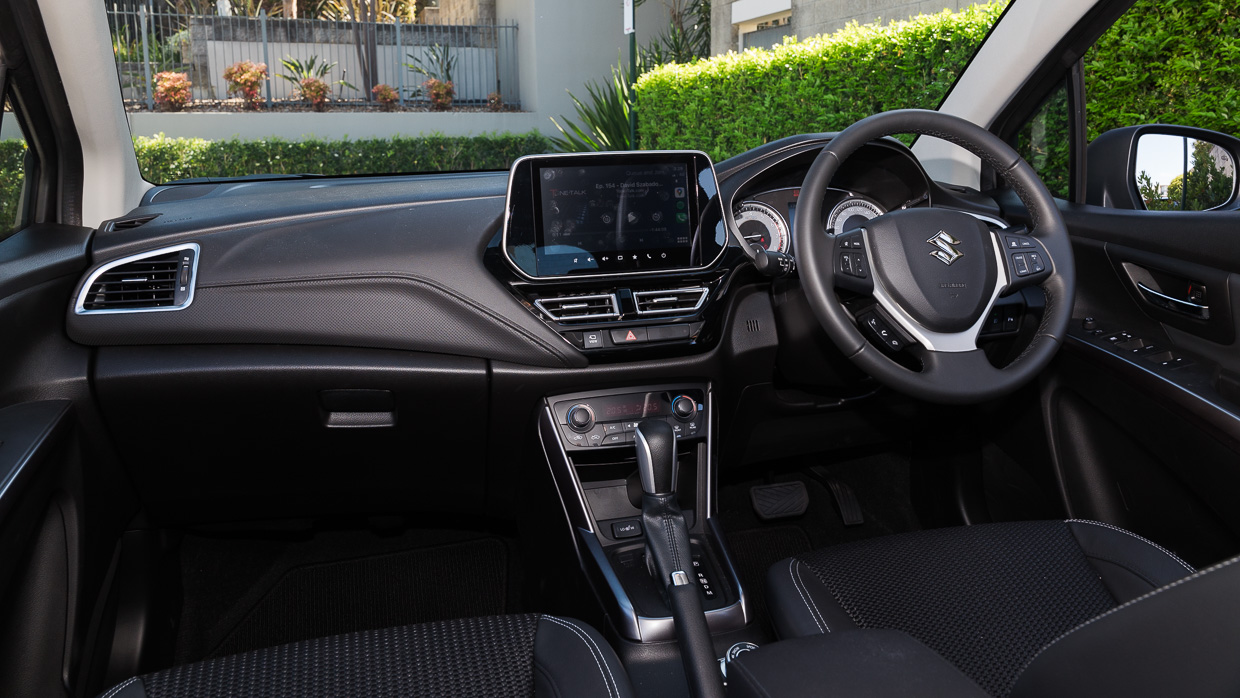
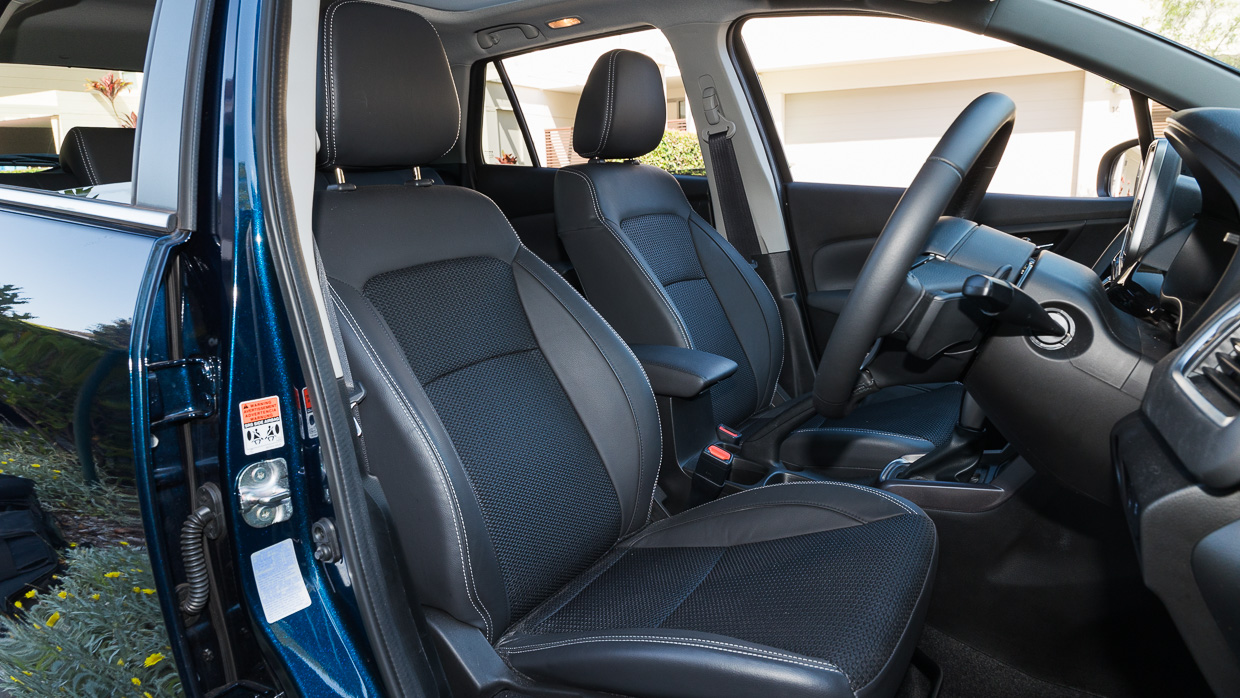
Outside, the undersized wheels, old-school door handles, protruding tail light lens and ’90s application of chrome trimming drags the aesthetic into yesteryear. The throwback vibe is even more intense inside and, again, not a fault: some buyers will really warm to the sense of familiarity.
Most surprising is that the most expensive Suzuki the Aussie dollar can buy is minted so extensively in hard and shiny plastic. It ballistics-grade stuff and reminds of a Toyota Hilux in general vibe, and the upshot is that it’s surely hard-wearing and easy to clean (even with a hose).
What’s not hardy plastic is satin grey, plasty-chrome and piano black by the numbers, or leather (wheel) and leather-appointed (seat trim), though the latter is sticky enough to trade convincing as fake stuff.
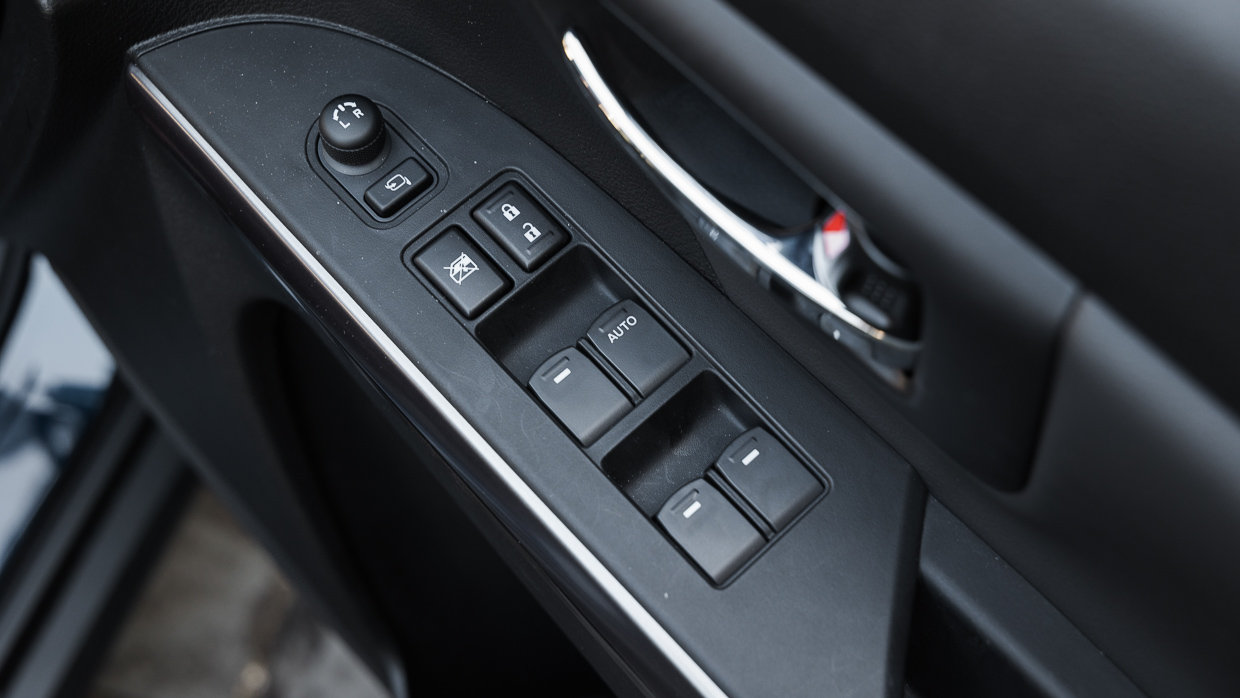
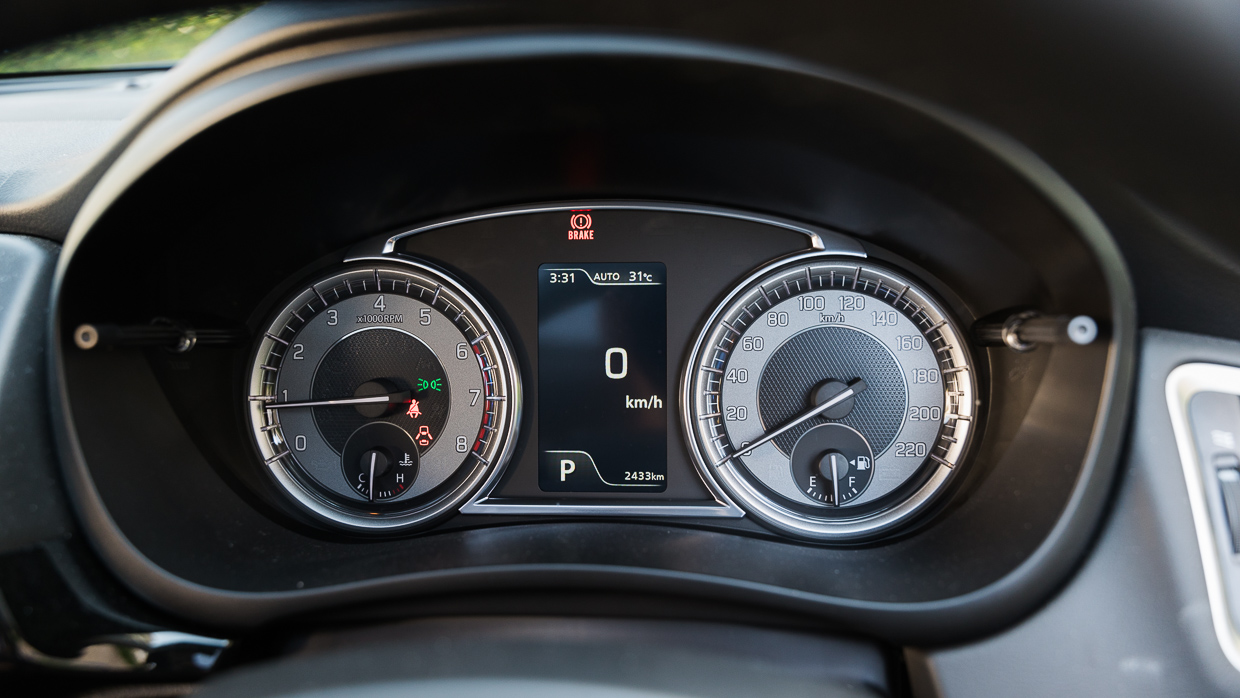
There’s really little reward to remind or reinforce that you’ve stumped $46K for the pinnacle variant of a flagship model. The hard plastic dash top; the ’00s Benz-like analogue instruments with petite 4.2-inch LCD screen; the fully-mechanical front seats with no lumbar adjustment whatsoever.
All of S-Cross’s logical rivals (bar perhaps Mitsubishi ASX) have Suzuki covered off with more contemporary appointments and a brighter sense of occasion with the competition.
The front seats are no highlight: bar the unsupple trim and flimsy adjuster levers, the seat base is short and the seat back has a protruding hump right between the shoulder blades of the front passengers. They present nicer than they feel.
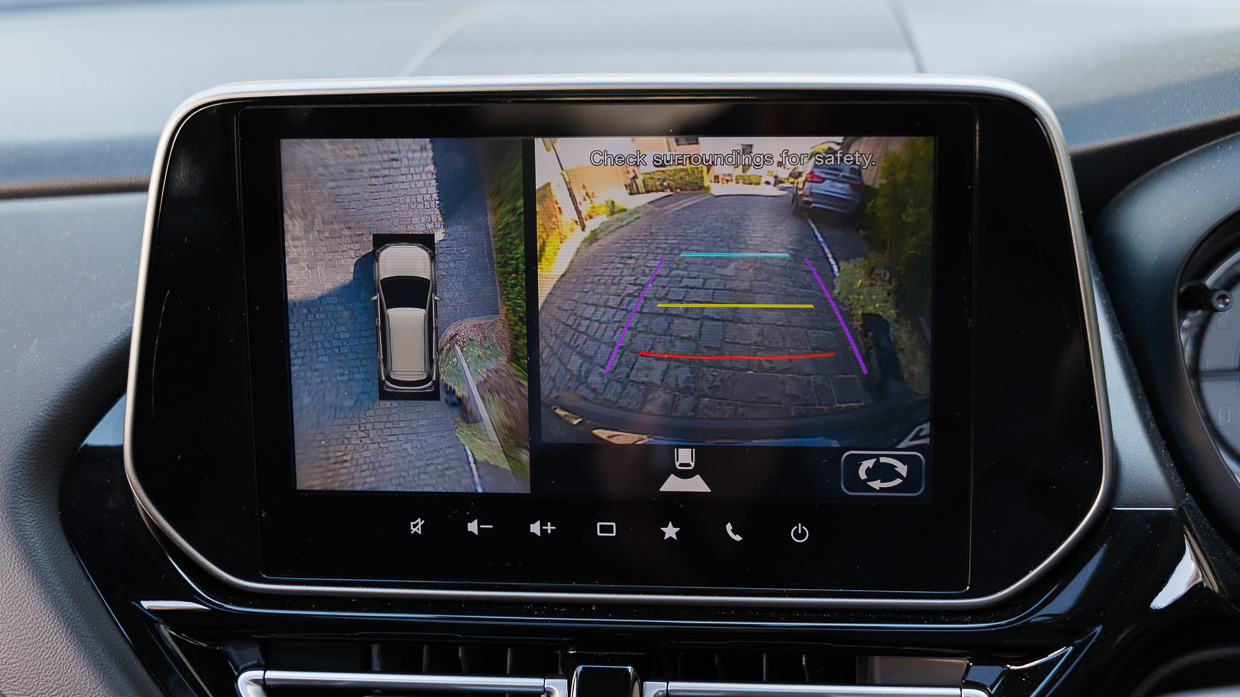
The 9.0-inch media system is workmanlike (and a Prestige exclusive). It’s not that slick, it’s not that quick, and it’s not full of proprietary features. But wireless CarPlay and wired Android Auto (older USB-A interface) work as intended most of the time, even if the former isn’t complemented with inductive charging.
And, for kicks, the faux 360-camera system makes a proud arrival on screen at start-up with a viewpoint that circumnavigates a digitised graphic of the vehicle.
Elsewhere, the Prestige fits a split panoramic glass roof with the cloth screen and tries, and mostly fails, to reduce the heat penetration through the ceiling on a sunny day. You get seat heating (but no cooling), though this feature is curiously also an inclusion on lower-grade variants.
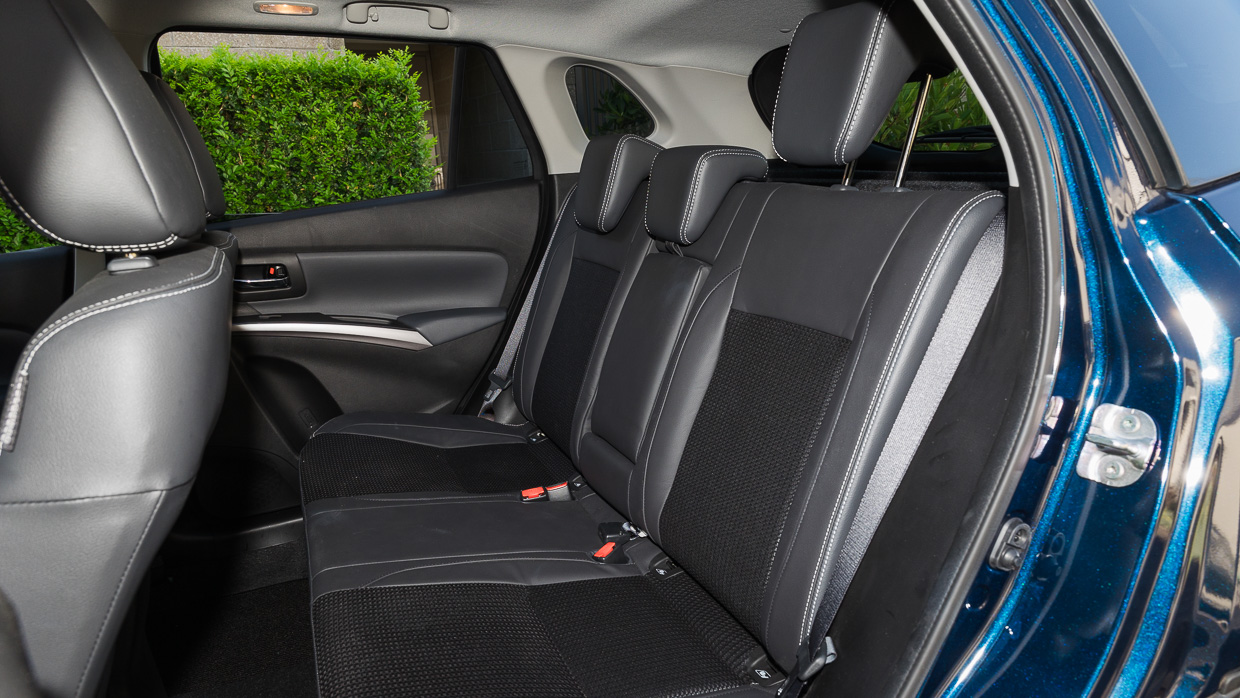
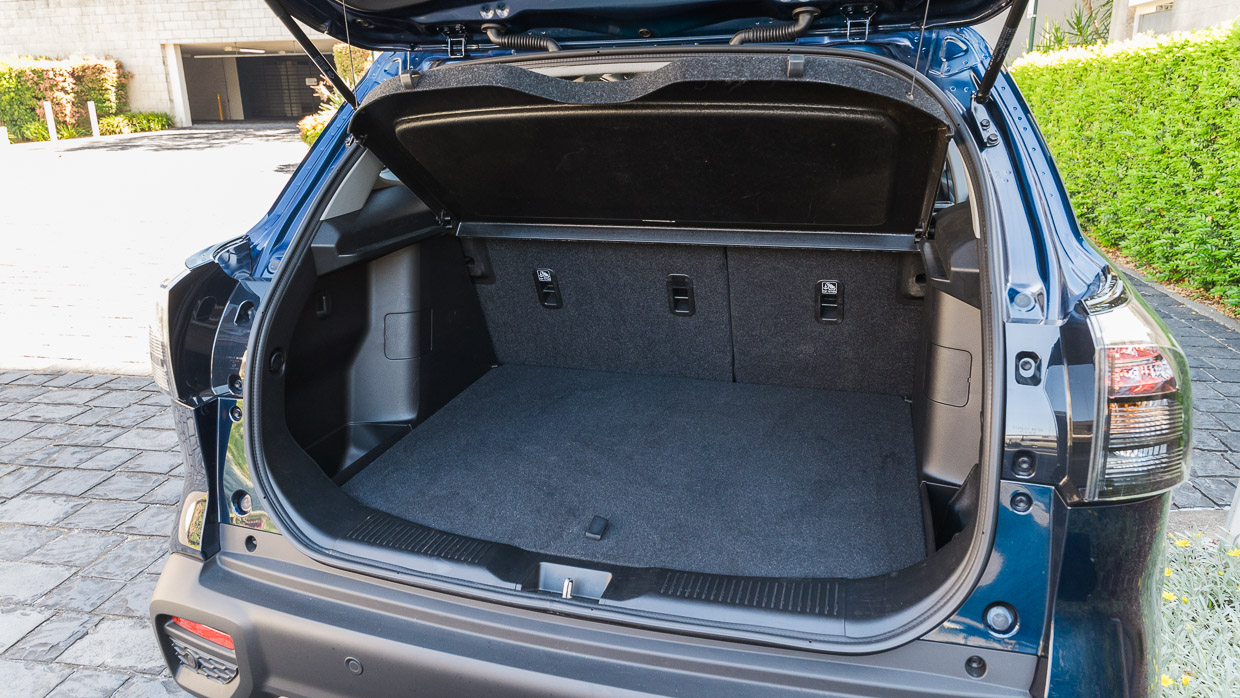
Row two space is fine enough for two adults, the S-Cross’s narrow cabin width making it a short-trip pinch as a genuine five-seater. But why the low-rent fitout? No device power. No rear air vents. No map pockets. No centre armrest. As a family hauler or ride share proposition, there’s little to recommend here.
The boot is advertised as 430 litres with nice square proportions and usable dimensions and packaging. There’s a space saver spare housed under the floor.
While there nothing necessarily broken with the S-Cross AllGrip Prestige interior, there’s certainly not a lot to write home about in outright terms, nor much added joy beyond more affordable variants downstream in its line-up.
While the old gen-gen S-Cross carried five-star ANCAP credentials through to 2022 from assessment conducted way back in the Dark Ages of 2013, the new (and largely related) gen three is currently unrated. (Ditto the existing Vitara range.)
Only Jimny (three stars) and Swift (one star) feature on ANCAP’s current ratings regime.
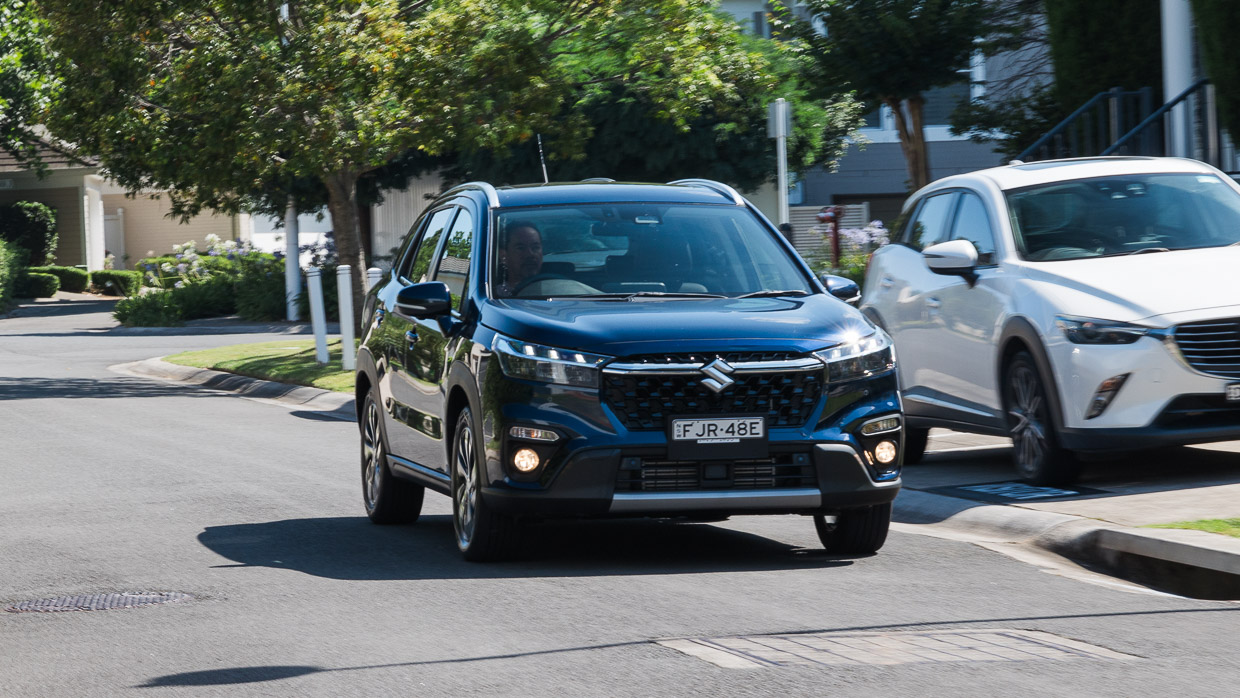
Standard safety features include:
All safety assists performed as expected during our test with no gremlins or false positives. Thankfully, Suzuki has omitted ‘driver annoyance’ monitoring systems and the S-Cross does not require any system disconnection after vehicle start-up.
Suzuki covers the S-Cross with a five-year, unlimited-kilometre warranty, which is standard industry fare these days.
Service intervals, though, are a short 10,000km or 12 months, whichever comes first. Interestingly, servicing pricing is capped for the first five years or 50,000kms at a total of $1985, or an average of $397 per visit. Not cheap.
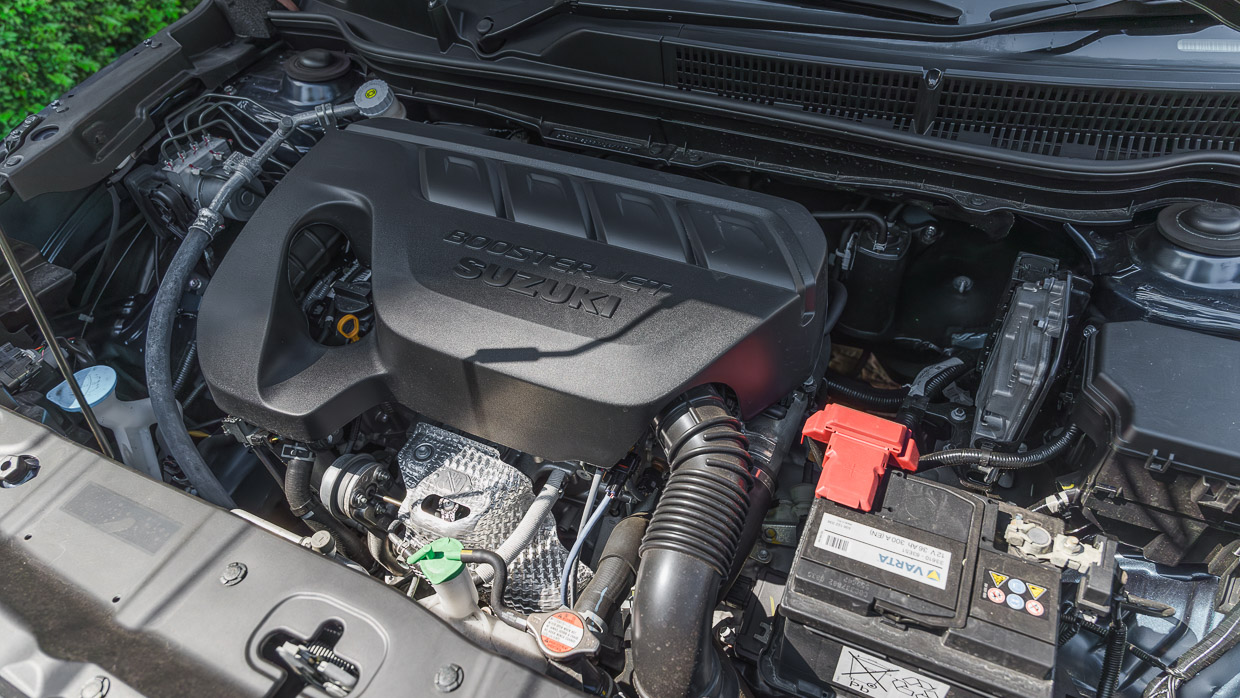
Interestingly, Suzuki offers capped pricing through to 100,000km if you’re a high-mileage driver, albeit if the excess mileage is kept within a 60-month cap.
It requires 95-octane fuel in its 47-litre tank. Again, at 6.9L/100km average tested, it’s thirsty for its type.
For all of its critical shortcomings, we had no objections reaching for the S-Cross key for whatever runabout task was at hand. It’s quick, easy to drive, a doddle to operate and, importantly for any SUV at this price point, it doesn’t nanny your driving choices whatsoever.
However, top to bottom and even in its ultimate AllGrip Prestige guise, the S-Cross is merely adequate by most measures and lacking in nearly all others.
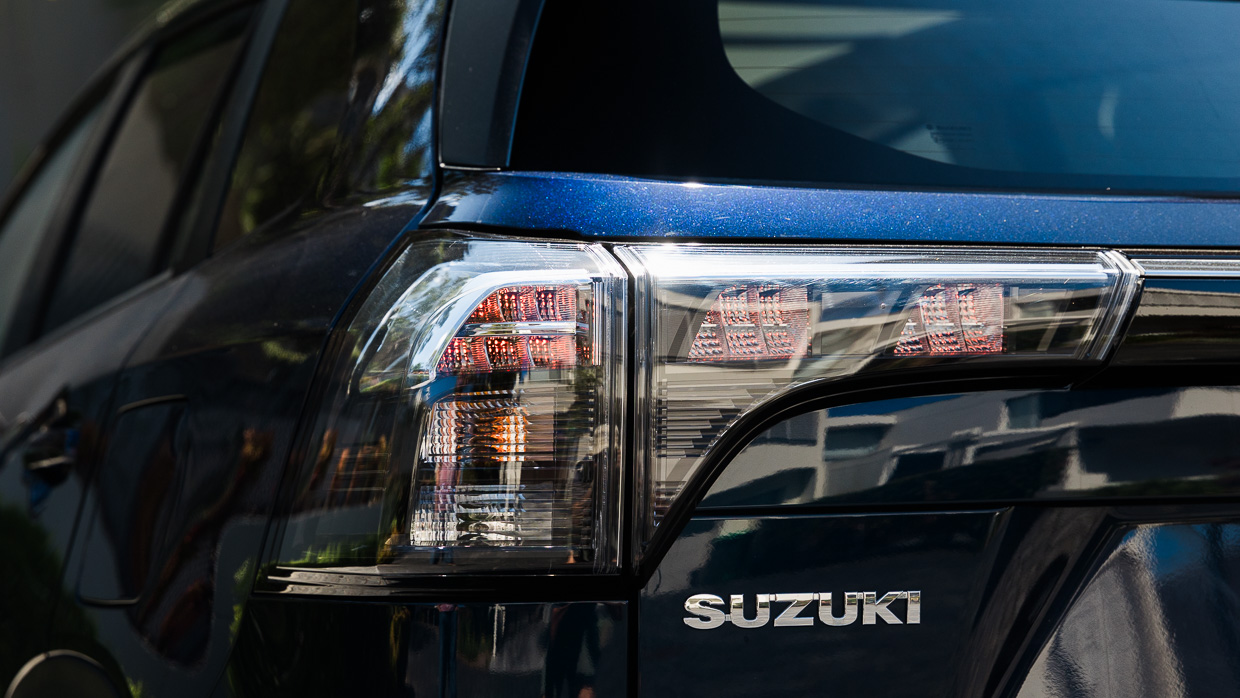
The pricing boom at the affordable end of the market in the past decade has been caused and somewhat justified by rising expectations of tech and safety, and offset somewhat by slick modernism. And where S-Cross doesn’t fall short here, its credentials are questionable.
The competition in the third-biggest-selling segment in Australia is simply too tough at $46K to recommend our test subject.
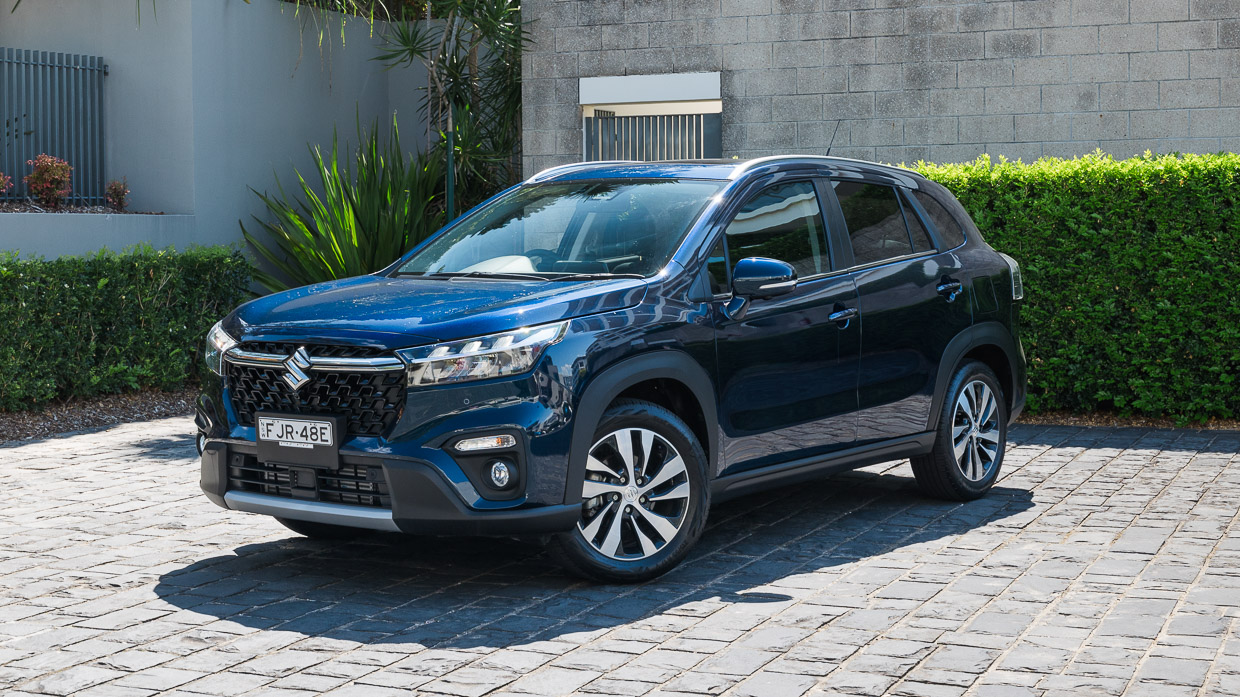
However, the S-Cross is far easier to recommend at its entry point: as cheap as $37K driveaway (MY23 plate) or $39K (MY24). The base AllGrip AWD, at a tenner under $40K parked in your muddy garden path, starts to make good sense as a regional runabout.
And yet the vastly more popular Vitara is an easier sell. It’s more affordable to get into, is similarly capable if not moreso on mixed terrain, and we’d best the residuals are rosier when it comes time to flip it.
Key specs (as tested)
About Chasing cars
Chasing Cars reviews are 100% independent.
Because we are powered by Budget Direct Insurance, we don’t receive advertising or sales revenue from car manufacturers.
We’re truly independent – giving you Australia’s best car reviews.
The estimate provided does not take into account your personal circumstances but is intended to give a general indication of the cost of insurance, in order to obtain a complete quote, please visit www.budgetdirect.com.au. Estimate includes 15%^ online discount.
^Conditions Apply
Budget Direct Insurance arranged by Auto & General Services Pty Ltd ACN 003 617 909(AGS) AFSL 241 411, for and on behalf of the insurer, Auto & General Insurance Company Limited(ABN 42 111 586 353, AFSL 285 571).Because we don’t know your financial needs, we can’t advise you if this insurance will suit you. You should consider your needs and the Product Disclosure Statement before making a decision to buy insurance. Terms and conditions apply.
Indicative quote based on assumptions including postcode , 40 year old male with no offences, licence suspensions or claims in the last 5 years, a NCD Rating 1 and no younger drivers listed. White car, driven up to 10,000kms a year, unfinanced, with no modifications, factory options and/or non-standard accessories, private use only and garaged at night.
^Online Discounts Terms & Conditions
1. Discounts apply to the premium paid for a new Budget Direct Gold Comprehensive Car Insurance, Third Party Property Only or Third Party Property, Fire & Theft Insurance policy initiated online on or after 29 March 2017. Discounts do not apply to optional Roadside Assistance.
2. Discounts do not apply to any renewal offer of insurance.
3. Discounts only apply to the insurance portion of the premium. Discounts are applied before government charges, taxes, levies and fees, including instalment processing fees (as applicable). The full extent of discounts may therefore be impacted.
4. We reserve the right to change the offer without notice.